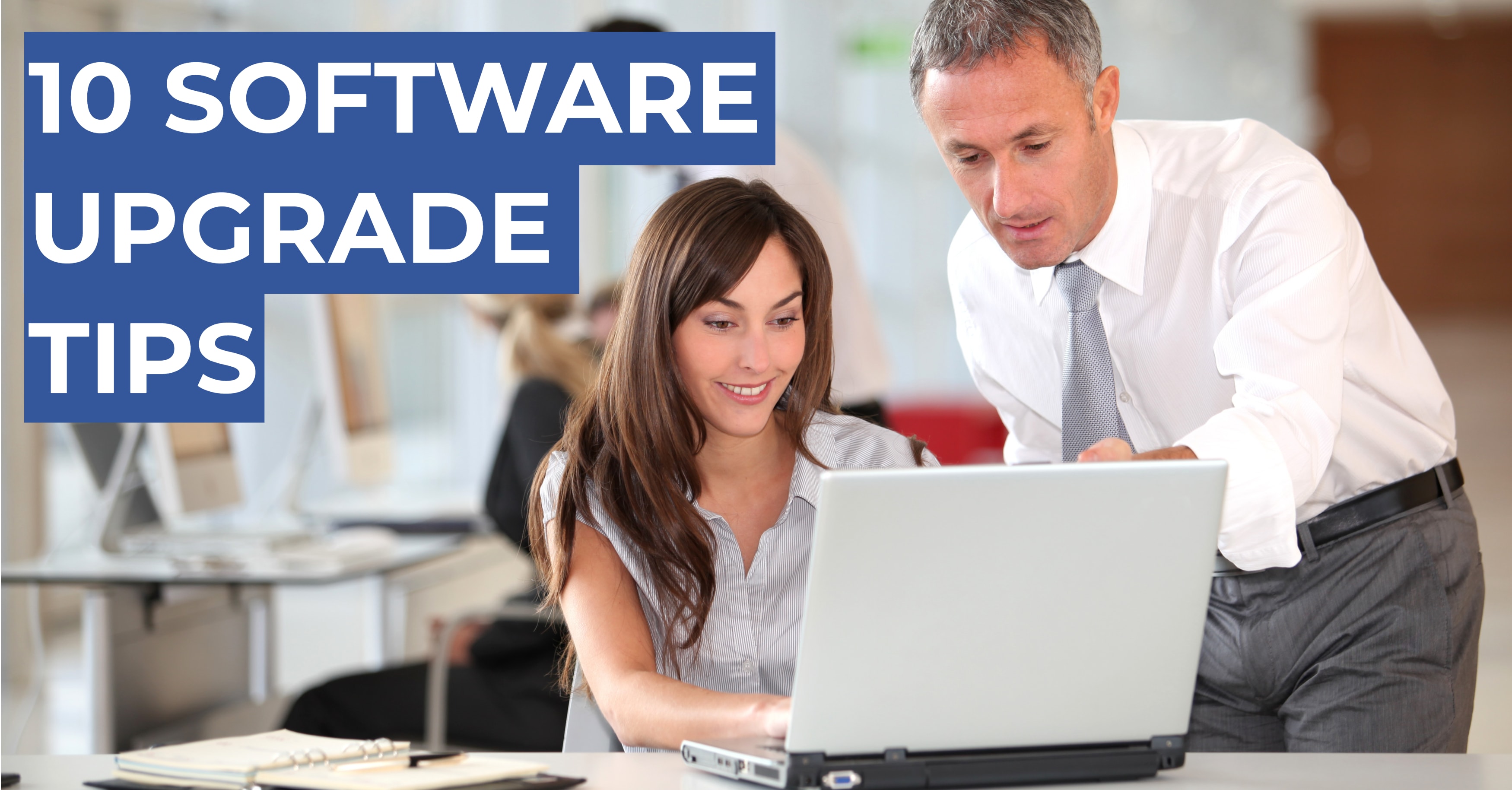10 Tips for a Successful Software Upgrade
When your company embarks on an ERP or CRM upgrade, there’s always the possibility that the project could somehow go off course. In fact, without proper planning, it’s inevitable that your upgrade will go off the rails, possibly costing your business tremendous time and money to get the project back on track. It’s just as risky to dive into an enterprise software upgrade blindly as it is to leap into an implementation without a plan.
Don’t put your hard-earned ERP or CRM investment to waste by botching the upgrade. By following our upgrade tips, your company can see higher profits, greater data security and improved software performance.
1. User Involvement
From the onset, the relationship between the implementation team and your company should be a partnership. Great teams work together and communicate. Establish roles and make sure everyone at the table understands what’s expected of them. It’s important for all relevant parties to be involved, including stakeholders, end-users and executives. Speaking of which….
2. Executive Management Support
Your C-Suite should be able to provide much more than funding for the upgrade project. When executes are willing to play a key role in the upgrade, end users and project teams become more motivated. When the C-Suite is engaged with the project managers, the upgrade can move along quickly without the concern that tasks will lag behind while waiting for feedback. Plus, clear communication between executives and project managers can streamline task changes or budget reworking to ensure the project is properly supported.
3. Clear Statement of Requirements
This may seem like the most obvious tip, but many businesses have led their upgrade to failure by neglecting to clearly define the project scope. Center the project on business processes, determining which functional and technical requirements will enhance your performance after the upgrade. The more customization required, the more defined the requirements will need to be.
4. Proactive Approach
Reactive “planning” isn’t really planning at all. In fact, it’s often a sign of CRM or ERP failure. Always be proactive. Recognize your company’s needs, research and determine the best solutions for your organization and prioritize which upgrades and additions will best help your company. This type of detailed planning and forethought can save your organization a fortune.
5. Customizations
Customizations can slow down the upgrade process. As you analyze your current software features and business processes, pay special attention to your current customizations. Do these customized features need to be maintained? Are there new strategies or features in the upgrade that make these customizations unnecessary to retain? Carefully weigh your options, and go for the solution that best complies with business needs and mitigates risk in the upgrade process.
6. Smaller Project Milestones
Sometimes projects can get bogged down if they aren’t broken into smaller components. Setting small milestones will help keep the software upgrade on schedule and provide consistent opportunities for measurement along the way. For more on this topic, you can read about phased software projects here.
7. User Training and Adoption
How tech-savvy is your staff? Can they effectively adjust to new enterprise software systems on their own? Chances are, you have a couple of folks who will struggle with any new technology. Not a problem; your organization doesn’t have to be filled with tech gurus as long as they are experts in their fields and willing to learn. Adapting to a new system takes time for everyone. By communicating early in the process—and by providing adequate training—users will adjust in no time.
8. Experienced Project Manager
Your project will require agility and industry insights. Internally, you will need a solid project manager who will be the best point of contact for all types of communication and can manage project conundrums that will inevitably arise. This is not a situation for a first-timer.
9. System Testing
Testing serves as one of the most crucial steps in your ERP or CRM upgrade. Comprehensive tests allow your business to check that your updated system supports your specific workflows and processes. Don’t forget to perform a mock go-live as close to the go-live date as possible to catch any final problems. In order for testing to be effective, the project team should strive to understand the software’s overall function, imagine how employees will utilize the system and concentrate test cases on upgraded features to determine how data will be used in the updated system.
10. Software Experts
If you’re looking for an ERP or CRM consulting firm that can reduce risk in your software upgrade and find optimal strategies to streamline your operations, look no further than Datix. We’re your one-stop shop for all things ERP and CRM. We’ve partnered with the best of the best in enterprise software, offering certified Dynamics 365 consulting and certified Salesforce consulting as well as certified Infor CloudSuite consulting. In addition to implementations and upgrades, we also facilitate seamless software integrations through our one-of-a-kind solution, Unity.
Don’t introduce risk into your CRM or ERP upgrade. Contact Datix’s expert consultants for comprehensive enterprise software services and solutions!


